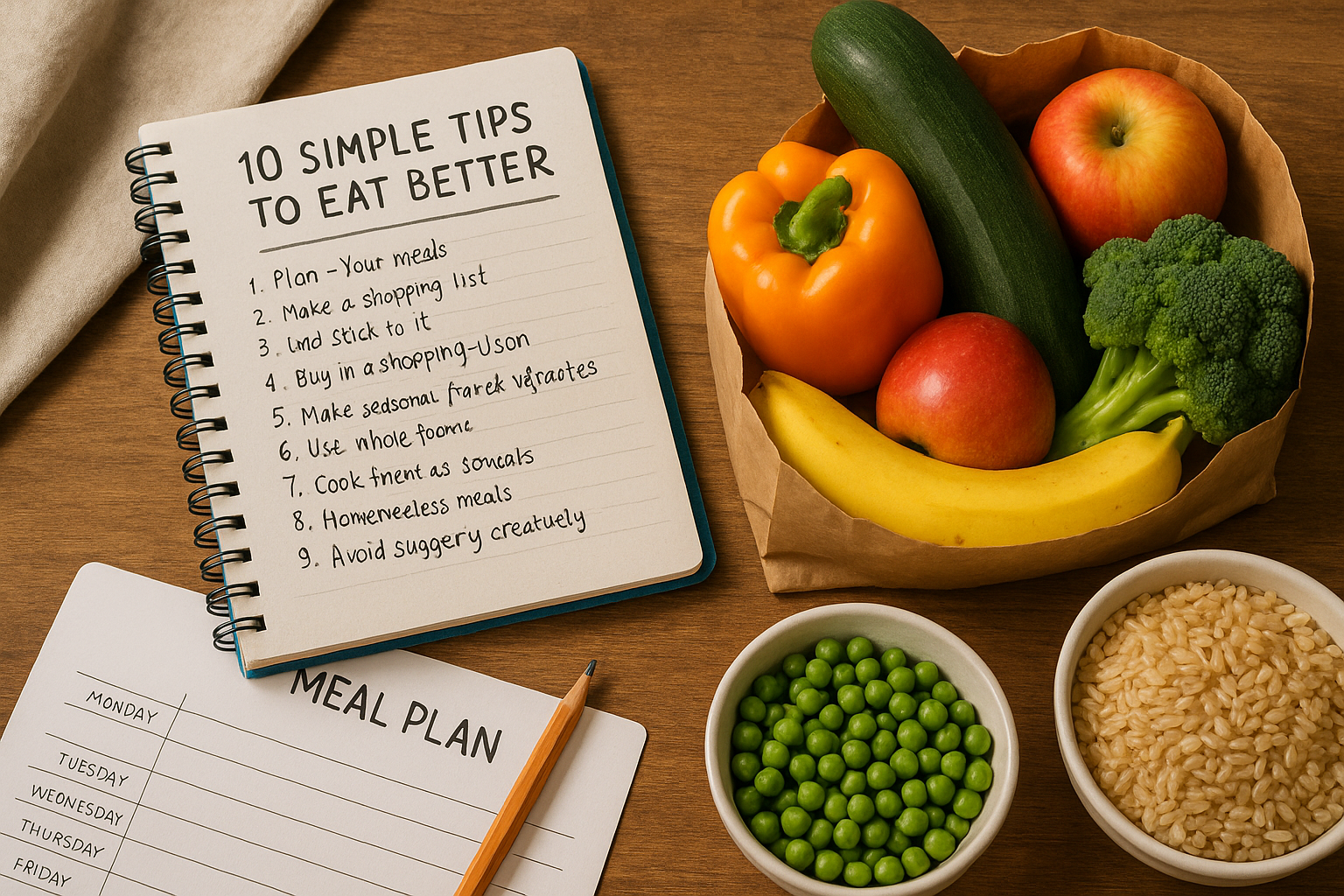Many people believe that eating healthy is expensive. While it’s true that some organic or specialty health foods can be pricey, a balanced diet doesn’t have to break the bank. With the right strategies, you can nourish your body, support your well-being, and save money at the same time.
Here are 10 simple, practical, and affordable tips to help you eat better—starting today.
1. Plan Your Meals for the Week
Planning your meals is one of the most effective ways to eat well on a budget. When you know what you’ll be eating:
- You avoid impulse purchases
- You use your ingredients more efficiently
- You waste less food
Start by planning 3 to 5 dinners for the week. Use similar ingredients across multiple meals to cut costs.
2. Make a Shopping List (and Stick to It)
A list helps you stay focused and avoid unhealthy temptations at the grocery store. Before heading out:
- Check what you already have at home
- Create meals based on what’s in your pantry or fridge
- Write down only the items you truly need
Bonus tip: don’t shop when you’re hungry—it leads to unnecessary purchases.
3. Buy Seasonal Fruits and Vegetables
Seasonal produce is often more affordable, fresher, and tastier. For example:
- In summer: watermelon, tomatoes, zucchini
- In winter: oranges, cabbage, carrots
Visit local markets or farmers’ stalls when possible—prices can be lower than supermarkets.
4. Cook at Home More Often
Eating out frequently can add up quickly. Preparing meals at home gives you control over ingredients, portion sizes, and flavor. You also avoid added sugars, sodium, and unhealthy fats.
Try cooking in bulk once or twice a week and storing leftovers for quick meals.
5. Use Whole Foods Instead of Processed Ones
Packaged and processed foods may seem convenient, but they’re often more expensive per serving and less nutritious.
Examples of affordable whole foods:
- Whole grains (rice, oats, lentils)
- Fresh or frozen vegetables
- Beans and legumes
- Eggs
- Potatoes and sweet potatoes
6. Buy in Bulk (Smartly)
Non-perishables like rice, beans, pasta, and oats are much cheaper when bought in bulk. Just make sure:
- You have space to store them
- You’ll actually use them before they expire
Avoid buying in bulk for perishable items unless you plan to freeze them.
7. Don’t Overlook Frozen Vegetables and Fruits
Frozen produce is just as nutritious as fresh, and often cheaper. It also lasts longer, which means less waste. Keep a few bags in your freezer to add to soups, stir-fries, or smoothies.
8. Try Meatless Meals Once or Twice a Week
Meat is often the most expensive item on a grocery bill. Try swapping it out for plant-based proteins like:
- Lentils
- Chickpeas
- Black beans
- Tofu
- Eggs
These ingredients are nutritious, versatile, and budget-friendly.
9. Avoid Sugary Drinks and Packaged Snacks
Sodas, juices, and packaged snacks can eat up your budget without offering real nutrition. Swap them for:
- Water with lemon or mint
- Homemade popcorn
- Fruit with peanut butter
- Yogurt with oats and honey
These swaps are better for your health and your wallet.
10. Use Leftovers Creatively
Don’t throw away leftover vegetables, grains, or proteins. Instead:
- Turn them into stir-fries or soups
- Use them in wraps or sandwiches
- Make bowls by combining different ingredients
One creative tip: keep a container in the freezer labeled “soup mix” and toss in small leftovers. When it’s full, make a hearty homemade soup.
Healthy Eating is About Smart Choices, Not Big Budgets
Eating better doesn’t require expensive superfoods or fancy diets. It’s about being intentional: cooking more at home, planning ahead, and choosing nutrient-rich foods that fit your budget.
By following these 10 simple tips, you can build habits that support your health while saving money. Remember: consistency is more important than perfection.
Even small changes, when practiced regularly, can lead to long-term well-being.
